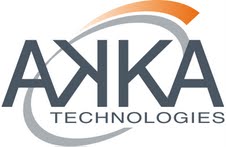Agenda
Case study : NSN – Implementing Agile in a large organization
Scaling Agile in Enterprise development. Agile methodologies are a best fit when used by small homogeneous teams.
How does Agile do when used by large teams delivering carrier-grade solutions for large enterprises?
In this case study, we will describe the Scrum pilots performed by the Packet Network division in Nokia Siemens Networks,
the insights, the challenges the lessons and the solutions used to adapt
Agile methodologies to large-scale software development projects
Values, Principles and Practices: Moving Beyond "Names" and Getting to What Works
If you're wondering why CMMI, ISO 9000, Scrum, other agile techniques or any other "named" set of practices aren't working well for your organization,
then perhaps it's not the practices but something else that is missing?
What controls the "space between the practices?" What about all the work that practices don't address? How to do you deal with that?
How do you deal with new needs the practices don't anticipate? Need to start "higher" than with practices.
Open Space
A Semi –formatted discussions on various subjects related to Agile development, moderated by leading Agile experts and evangelists:
Haim Deutsch (Agile Strategor) – Feature teams and component teams
Aviram Eisenberg (Ignite) – Agile and organizational changes it brings
Oren Mishali (Technion) – Agile tools and practices
Mike Zeevi (Soft Quest) – Agile in the world of medical device regulations
Orit Karlin (NSN) – Leading change in large organization
Inbar West (Super Derivatives) – Agile and ALM – tools, automation, metrics and much more
Gilad Manor (ValueShine) – XP Programming in Israel, what works and what does not
Rachel Ben Chanoch (Telmap) – PMO in an Agile organization
Rachel Falk (Ignite) – Distributed Agile in global companies
Guy Korland (GigaSpaces) - The benefits of agile in a competitive market, where cutting edge technology is a must
It’s not about Working Software after all
If you look at the history of software failures, the vast majority can be attributed not to technical mistakes,
but mistakes in understanding what should be built, what customers will buy, what the system needs to do in order to be successful.
The bottom line is this – if we don’t build the right thing, we may as not build anything at all.
Because customers don’t want software – they want a problem solved. And if they could get that problem solved without software – they would be delighted.
Fear and Courage – The Agile Coaching Conflict, Haim Deutsch, CST, CSC
The most serious block avoiding an organization from migrating toward Agile, as both as doing any real change, is certainly Fear.
At the other extremity, when studying most successful software development organizations, we easily remark that the most extraordinary value is courage. We will learn during this session,
how to identify fears, how to recognize fear from healthy risk management,
how to reach sublimation of a fear situation, how to develop good values in the organization like courage and team dedication.
The lecture will present coaching tools to determine fear level and fear causes.
Closing Words
Thank you words, gratitude, references, and some words on Agile community in Israel .


 Ghent
Ghent Fortaleza
Fortaleza Calgary
Calgary Santiago De Chile
Santiago De Chile Beijing
Beijing Besançon
Besançon Belfast
Belfast Dublin
Dublin Haïfa
Haïfa Bengaluru
Bengaluru Osaka
Osaka Vilnius
Vilnius Luxembourg
Luxembourg Genève
Genève Philadelphia
Philadelphia I like AgileTour
I like AgileTour





